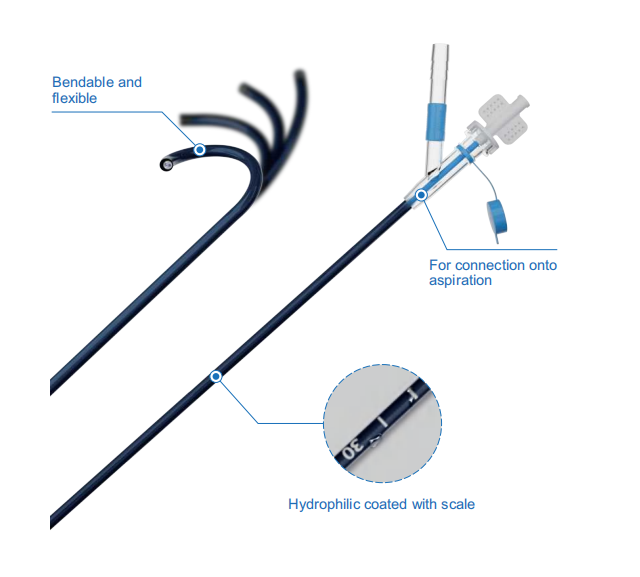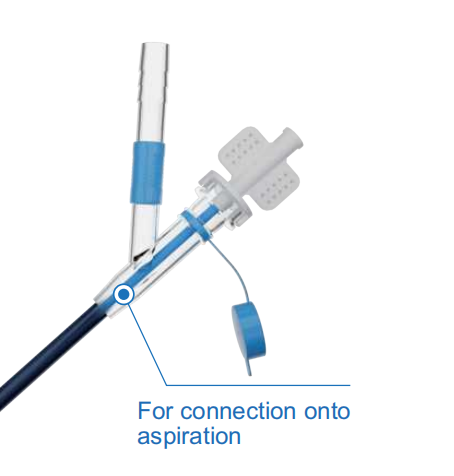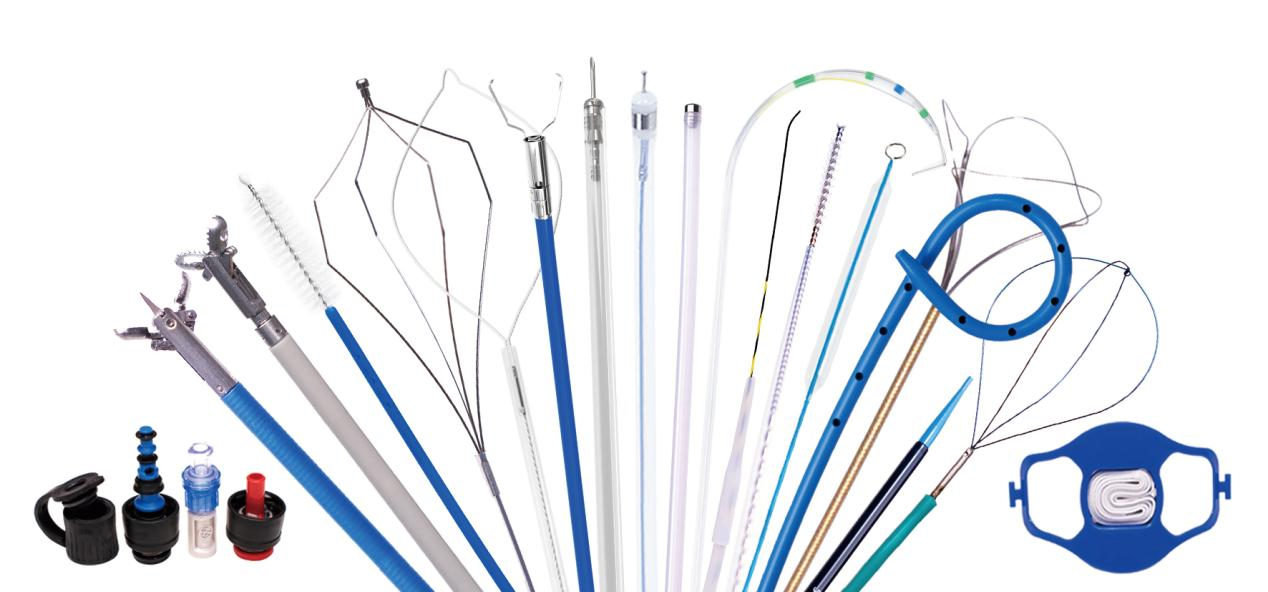01. Ureteroscopic lithotripsy is widely used in the treatment of upper urinary tract stones, with infectious fever being a significant postoperative complication. Continuous intraoperative perfusion increases the intrarenal pelvic pressure (IRP). Excessively high IRP can cause a series of pathological damage to the collecting system, ultimately leading to complications such as infection. With the continuous advancement of minimally invasive intracavitary techniques, flexible ureteroscopy combined with holmium laser lithotripsy has gained application in the treatment of kidney stones larger than 2.5 cm due to its advantages of minimal trauma, rapid postoperative recovery, fewer complications, and minimal bleeding. However, this method only fragments the stone, not completely removes the pulverized fragments. The procedure primarily relies on a stone retrieval basket, which is time-consuming, incomplete, and prone to stone street formation. Therefore, improving stone-free rates, shortening operative times, and reducing postoperative complications are pressing challenges.
02. In recent years, various methods for intraoperative monitoring of IRP have been proposed, and negative pressure suction technology has gradually been applied to ureteroscopic lithotripsy.
Y-shaped/suction ureteral access sheath
Intended Use
Used to establish instrument access during ureteroscopic urology procedures.
Procedures
Flexible/rigid ureteroscopy
Indications
Flexible holmium laser lithotripsy,
Microscopic examination and treatment of upper urinary tract hematuria,
Flexible holmium laser endoincision and drainage for parapelvic cysts,
Use of flexible endoscopy in the treatment of ureteral strictures,
Use of flexible holmium laser lithotripsy in special cases.
Surgical Procedure:
Under medical imaging, stones are observed in the ureter, bladder, or kidney. A guidewire is inserted through the external urethral opening. Under the guidewire, a vacuum-pressure suction ureteral guide sheath is placed to the stone removal site. The guidewire and the dilator tube within the ureteral guide sheath are removed. A silicone cap is then placed. Through the central hole in the silicone cap, a flexible ureteroscope, endoscope, laser fiber, and operating cable are introduced through the main channel of the ureteral guide sheath to the ureter, bladder, or renal pelvis for the relevant surgical procedures. During the procedure, the surgeon inserts the endoscope and laser fiber through the sheath channel. During the laser lithotripsy, the surgeon simultaneously aspirates and removes the stones using a vacuum suction device connected to the vacuum drainage port. The surgeon adjusts the vacuum pressure by adjusting the tightness of the Luer connector cap to ensure complete stone removal.
Advantages over traditional ureteral access sheaths
01. Higher Stone Removal Efficiency: The stone-free rate for patients undergoing stone surgery using a vacuum-pressure ureteral guide sheath reached 84.2%, compared to only 55-60% for patients using a standard guide sheath.
02. Faster Surgical Time, Less Traumatic: The vacuum-pressure ureteral guide sheath can simultaneously fragment and remove the stone during surgery, significantly reducing operative time and the risk of bleeding and bacterial infection.
03. Clearer Vision During Surgery: The vacuum-pressure ureteral guide sheath expedites the extraction and infusion of perfusate, effectively removing flocculent material during surgery. This provides a clearer visual field during surgery.
Product Design Features
Suction Chamber
Connects to a suction device and serves as a suction channel, allowing drainage fluid to flow out and also for aspirating stone fragments.
Luer Connector
Adjust the tightness of the cap to adjust the suction pressure. When the cap is fully tightened, the suction is maximized, resulting in the highest suction force. It can also be used as an irrigation chamber.
Silicone cap
This cap seals the main channel. It features a small central hole, allowing for the introduction of a flexible ureteroscope, endoscope, laser fiber, or operating cable through the main channel of the ureteral introducer sheath to the ureter, bladder, or renal pelvis for aseptic surgical procedures.
We, Jiangxi Zhuoruihua Medical Instrument Co.,Ltd., is a manufacturer in China specializing in the endoscopic consumables. We have GI line, such as biopsy forceps, hemoclip, polyp snare, sclerotherapy needle, spray catheter, cytology brushes, guidewire, stone retrieval basket, nasal biliary drainage catheter which are widely used in EMR, ESD, ERCP. And urology line, such as Urinary Stone Retrieval Basket, Guidewire, Ureteral Access Sheath and Ureteral Access Sheath with suction etc.Our products are CE certified, and our plants are ISO certified. Our goods have been exported to Europe, North America, Middle East and part of Asia, and widely obtains the customer of the recognition and praise!
Post time: Aug-02-2025





